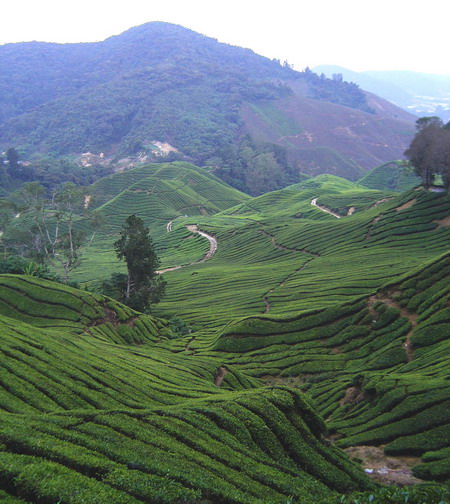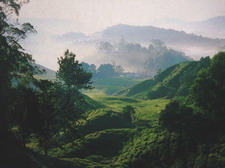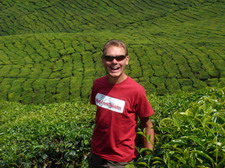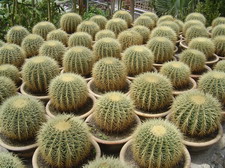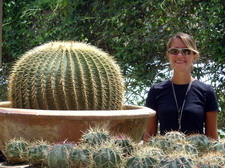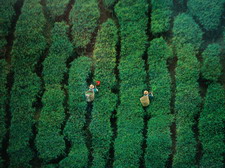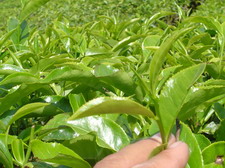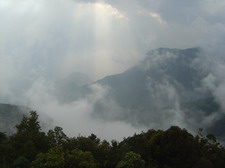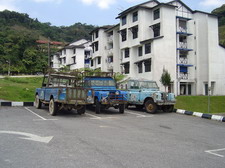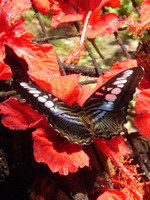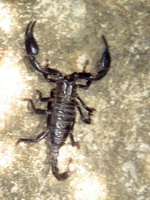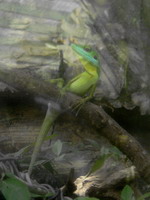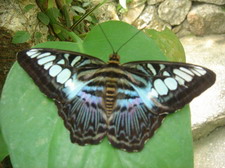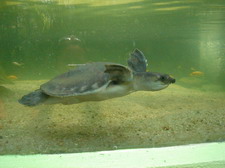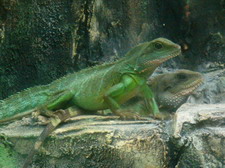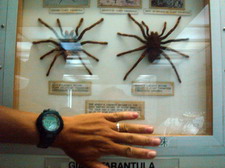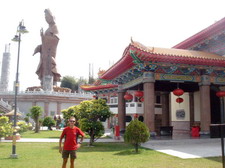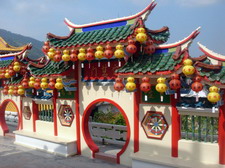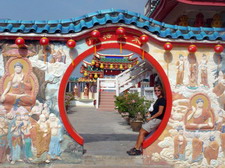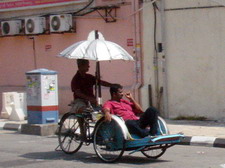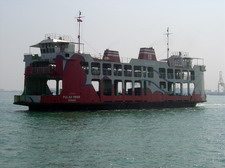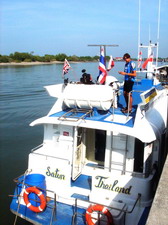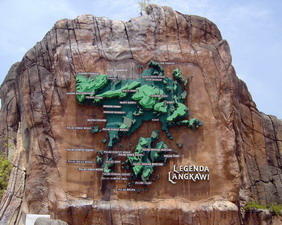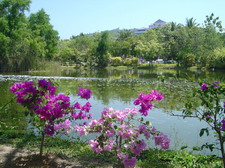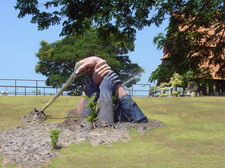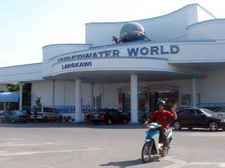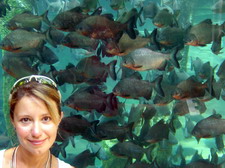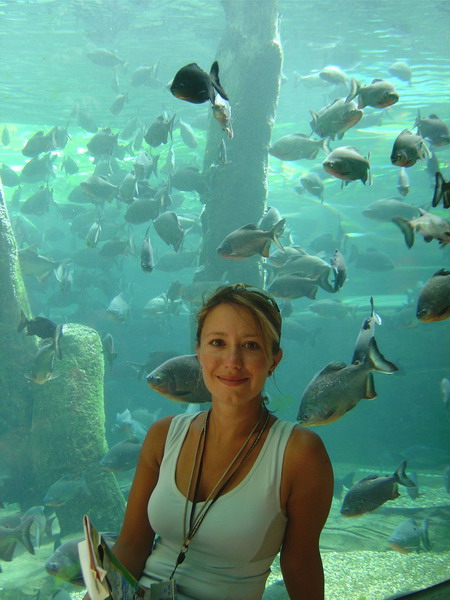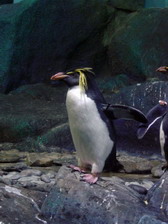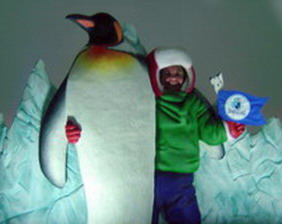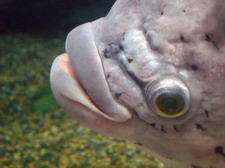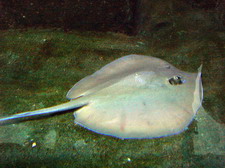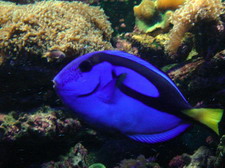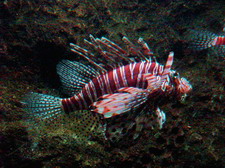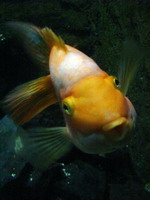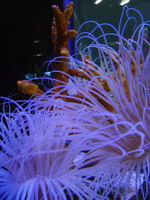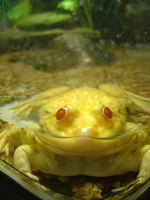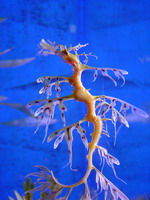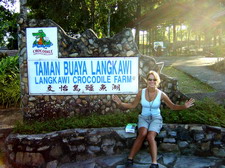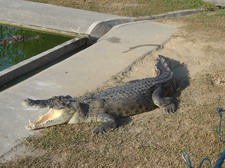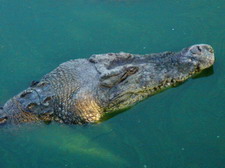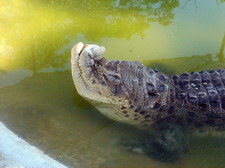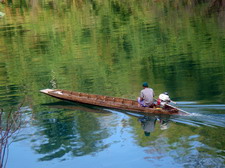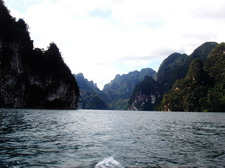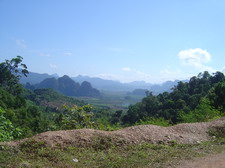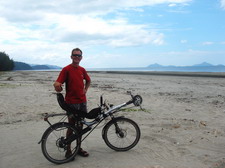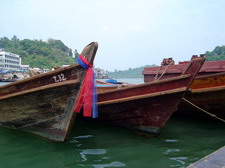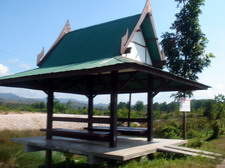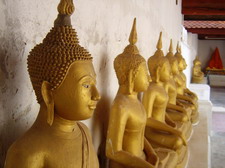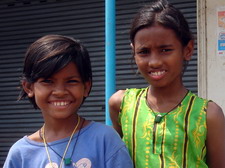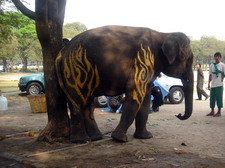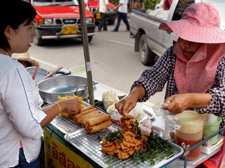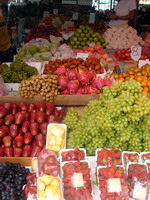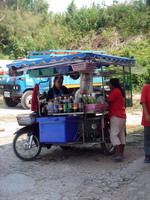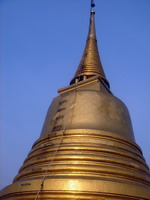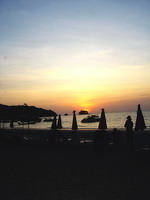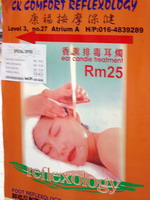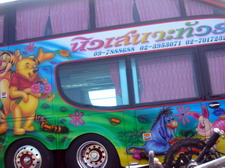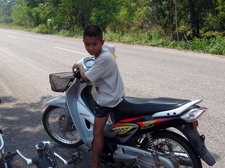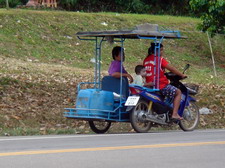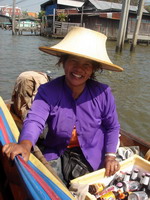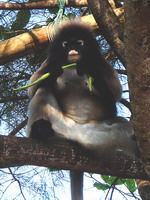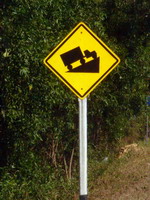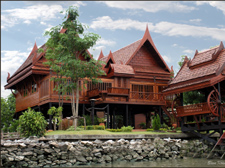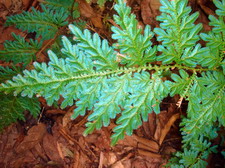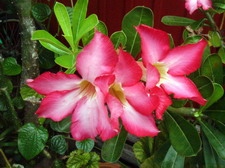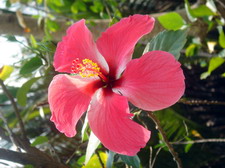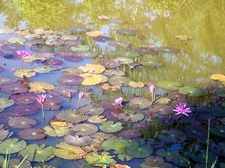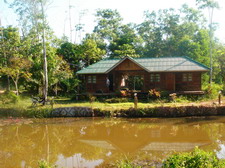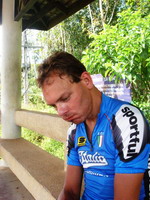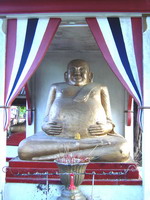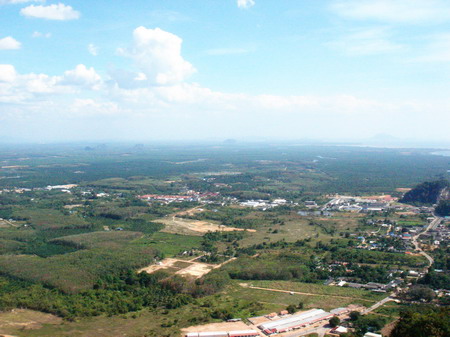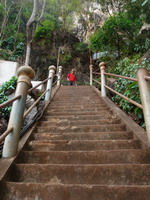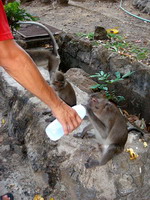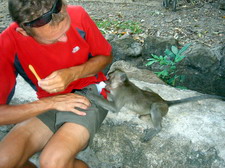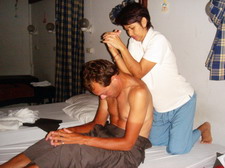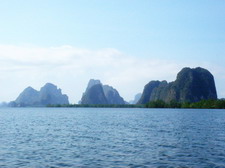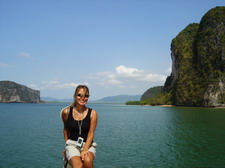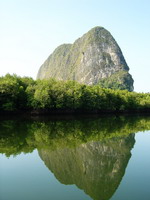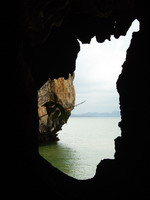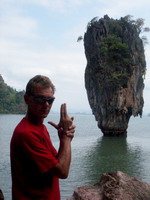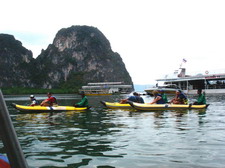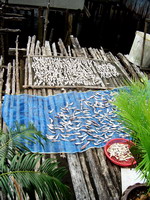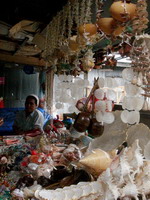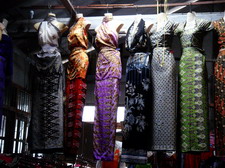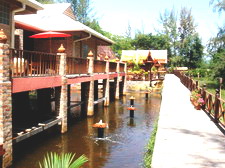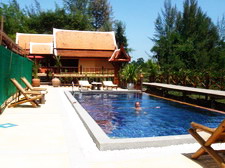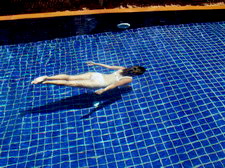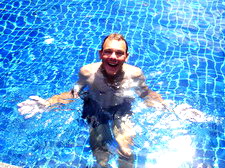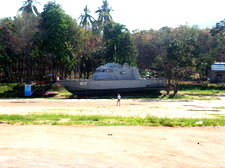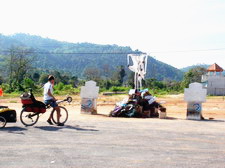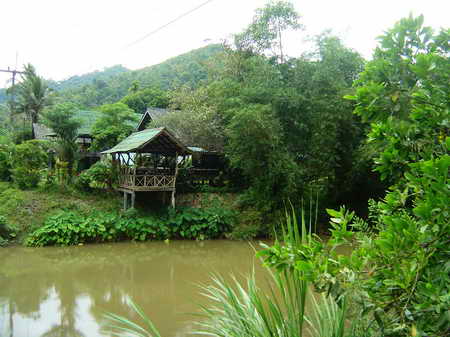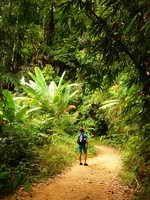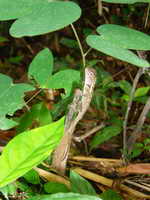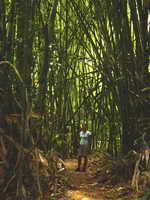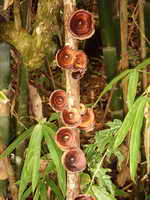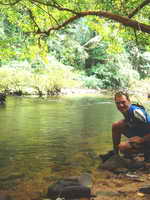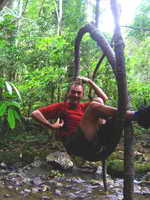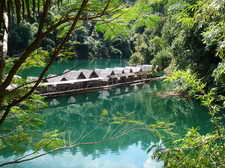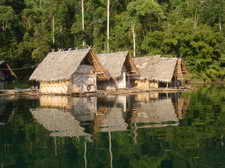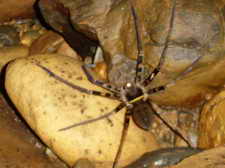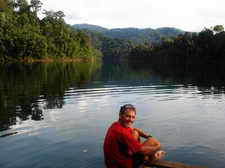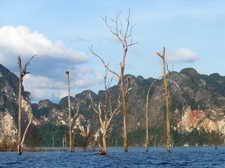Day 224: Cameron Highlands
Mar 13th, 2006 by Nuts On Bents
Not far out of Butterworth we were advised by various people to take the motorway rather than the busy and narrow highway to Ipoh. We followed the advice, and ignoring the all too clear ‘No bicycle’ signs went past the tolls with no problems – in fact the police waved at us and took photos! (not mugshots!). The motorway was new, nice and wide clean hard-shoulders, and lined with lawns and bougeainvillaes!!!! Unbelievable. Over the next two days we saw several policemen who just waved at us and smiled. Probably the novelty of our bicycles prevented us from being escorted off!! One other advantage of taking the motorway was cutting out about 30km from the route as it was more direct.
From Ipoh we headed down south about 10km, to take the newly built highway across the mountains to the east coast. Luckily for us the road passed through a beauty spot up on the mountains known as the Cameron Highlands – a colonial hill station famous for its rolling hills, tea plantations, jungle trails, and cool climate. Named after William Cameron, a government surveyor who stumbled across the area in 1885 during a mapping expedition, the Highlands are very popular with the Kuala Lumpur crowd wanting to escape from the heat of the city, and the odd foreign tourist like us.
The new road was well surfaced, fairly quiet, and although rising steadily from sea level to 1500m over 40km or so, not too steep. We came off the main road near the village of Kampung Raja (no accommodation), and then cycled further uphill another 15km or so to the town of Brinchang – one of the three main resorts in the area. The hotels here are uniformly overpriced – after much searching we found a nice new apartment for a reasonable rate. We were slightly worried that it had no air conditioning – but the hotel manager assured us that it wouldn’t be necessary since the temperatures dropped sharply at night. She was right – it was great to sleep with the window open and cool fresh air coming in, instead of the drone and artificial coolness of the a/c unit!
We took a couple of days to explore the area – alas no motorbikes were available (since all tourists come in their own car or with tours) so we signed up for a basic sightseeing tour. Cameron Highlands is as quintessentially English as you get – the weather is typical of an English summer, the landscape lush and green, and even the odd scone and afternoon tea thrown in here and there. As well as being a popular tourist spot, it also produces much of Malaysia and Singapore’s tea, strawberries, tomatoes, and other vegetables and fruits too delicate to be grown in the tropical lowlands. All the locals drive battered old land rovers – never seen so many in one place before! Handy to carry the produce and negotiate the steep dirt tracks up the mountain sides…
Our sightseeing tour took us to a cactus farm, also growing various types of flowers (mainly of the English variety – such as busy lizzies and roses – which we take for granted but to the locals it is a novelty), and other fruits and vegetables not seen elsewhere in Malaysia. We were then taken to a bee farm and sampled the lovely honey, and a pick-your-own strawberry farm. Next we were driven to a tea plantation, rolling hills covered by tea plants with narrow corridors at regular distances to allow hand-picking labourers access.
The next day we set off to get to the top of the highest summit in the region (Gunnung Brinchang) which promised fantastic scenery. The taxi rates to the top were exorbitant – so we took the narrow and steep jungle trail up the side of the mountain, and got to the summit at 2100m after an hour’s climbing. The views were spectacular, though marred with low clouds sweeping over the hills all around us, illuminated by the rays of the sun.
